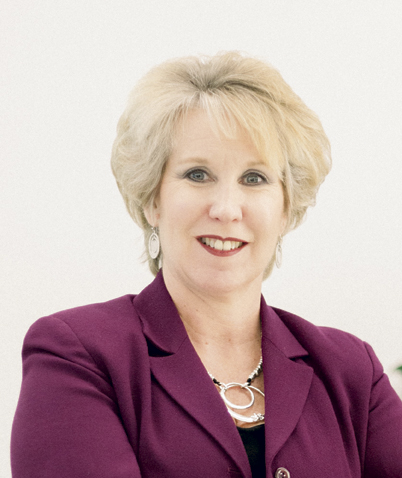Technology
TOGETHER EVERYONE ACHIEVES MORE
The AUGIE Group tackles initiatives requiring cooperation from all areas of the industry
By Christopher W. Cook
Before I landed at Rough Notes, I waited tables for over twelve years at various establishments, because that’s what you do with a BFA in creative writing. And while having a collaborative effort from the front and back of the house at these restaurants was necessary for busy Friday nights or holiday weekends, I was never a big fan of the acronym T.E.A.M.—Together Everyone Achieves More. I was always more of a “if you want something done right, do it yourself” or “there’s no ‘I’ in team, but there is one in Chris” type of worker. If someone asked me to grab a container of ranch dressing from the walk-in, take a drink order for a new six-top that just got seated, or roll ten sets of silverware into napkins on the fly, I had no problem with it—I knew what needed to be done. But in the end, it was team effort that led to a successful shift.
At the October meeting in Las Vegas of the AUGIE Group—an organization that supports the discussion and implementation of technology to improve the efficiency of the independent agent and broker distribution channel in the digital age—leaders shared the group’s current initiatives, which seem to require a team effort across all sectors of the insurance industry, from agents and brokers to carriers and vendors.

-Kitty Ambers
Chief Growth Officer
AVYST
Digital ecosystem
A common word heard in the insurance industry today is insurtech. Are insurtechs hurting or helping the independent agency distribution channel? How do insurtech and all the other technologies interact? An ecosystem is defined as a biological community of interacting organisms and their physical environment, but how would a digital ecosystem function?
“Agents voice their concerns about the abundance of solutions without understanding where each vendor starts and stops, how they can connect seamlessly, and how the tools will actually meet measurable business objectives,” says Jason Walker, CEO of Agency Insurtech and an AUGIE ambassador. “Many agents see an opportunity to inject automation, which should allow more time to align with high-yield customer relationship building and advisory solutions.
“Plenty of groups are building educational material to advise agents on the customer journey,” he adds. “The digital ecosystem is meant to be more expansive and is as much about the agent journey as it is the customer journey. Both are required in the insurance value chain equation to make it impactful. Digital or tech enablement is how we get there.”
But do multiple technology solutions help in the long run?
“Many agents struggle to create an excellent 24/7 customer experience based on vendor and carrier systems that weren’t designed to play well together,” notes Kitty Ambers, chief growth officer at AVYST, who led the digital ecosystem discussion at AUGIE’s meeting. “For agents, creating that experience is vital to compete. It requires the ability to pull all customer touchpoints together with seamless integration and data transfer between industry players.”
She adds, “Agents can’t change the system alone—agents, carriers and solution providers need to work together to transmit critical data in a continuous customer journey.”
The mission of the AUGIE Group’s digital ecosystem project is to advance education about and adoption of digital technology solutions for independent agents and their partners. And education is key.
“There is such a gap in education around solutions agencies have already purchased but aren’t maximizing; it’s critical for agencies to stay current to ensure they are using all the features and benefits available in their agency management system as they consider what additional solutions enhance efficiency,” says Ambers.
Adds Walker, “The digital ecosystem is a collection of digital solutions that—when working together in a connected, orderly fashion—help facilitate and automate agency prospecting, sales, marketing, and service processes. If we look at insurance agencies engaging with customers, we start to ask ourselves what are all the different categories that make up the A-to-Z process. If we look at an agency process from education to analysis, who could be working together?”
The group dissects all these working-together parts along the customer journey into the following categories:
- Education
- Prospect Generation
- Prospect Distribution
- Prospect Capture
- Prospect Nurture
- Prospect Rate
- Customer Bind
- Customer Service
- Analysis
For the digital ecosystem, tactics and platforms, objectives and sample partners are identified for each category to see where individual solutions could work together.

-Jason Walker
CEO
Agency Insurtech
“Agents are inundated with digital solutions that promise the world in exchange for a subscription fee,” says Walker. “In many cases, these solutions do a phenomenal job of solving a single pain point somewhere in the agent and customer life cycle. With so much incentive for technologists to ‘stay in your lane,’ the agency lacks an advocate that categorizes and contextualizes the offerings and defines their roles in a much greater digital ecosystem.”
According to Ambers, the AUGIE initiative is asking: “What should we focus on in each of these areas to define the objectives of each group and to define the tactics and platforms available while seeking the vendors and partners willing to collaborate and grow these various areas?”
It sounds like a massive undertaking, and this is only the beginning of the organization’s digital ecosystem drive.
“The initiative is in its infancy but has gained interest in a short period of time,” says Walker. “Kitty Ambers and I led an AUGIE town hall meeting in August with the support of Cal Durland (interface optimization director at IVANS Insurance Solutions and AUGIE Group facilitator), where we introduced the concept and engaged providers, agents, state associations and carriers to elicit opinions and recommendations.
“The feedback was overwhelmingly complimentary, and ideas were generated to help us build on the concept,” he adds. “We are currently developing a small, diverse team of action-oriented industry professionals to participate in a commit-tee dedicated to this cause.” Initiative leaders plan to hold monthly meetings to identify areas of focus and build out user cases and proofs of concept.
“Agencies for too long have received education only,” says Walker. “Education is the first valuable step to create understanding and assimilation; however, an actionable prescription that uses proof of concept as its accountability measure will create a tried and true model. We plan to replace ‘what if’ with ‘what now.’ All participants must leave ego and brand at the door to accomplish something worth getting excited about for agencies.”
Ambers adds: “Representatives from all areas are wanted, from agents, carriers, MGAs and wholesalers, to technology vendors and solution providers. We want a great cross section from the industry to solve this problem. Expertise in all areas is welcome.
“It seems like a huge project, but we’re going to bite off chunks and work through them systematically We need to take a standardized approach and share the data across all different types of platforms so we can effectively service and educate our customers, no matter what markets we write for or what lines of business we specialize in. It’s critical for being an effective digital agent in the world today,” she concludes.

-Donna LaGoy
Manager of Risk Reporting and Production Data
Acrisure
Rough Notes discussed claims down-load in a June 2017 article titled “Claims Download Matures.” But even with this “maturing” covered two years ago, the product has yet to reach perfection.
Claims download allows agents and carriers to share up-to-date and detailed information regarding claims; the process is automated from the initial reporting until the claim is closed, and all the data is directly integrated into an agency management system.
“As an agent, you want to find the information you need in your system,” says Donna LaGoy, manager of risk reporting and production data at Acrisure and an AUGIE ambassador who led the claims download discussion at the group’s meeting. “Claims download provides immediate updates of all claims to better serve our clients.”
It sounds simple, but why—considering the positives from a recent AUGIE Group-conducted survey—aren’t more agencies and carriers using it?
“Our survey’s feedback revealed that claims download does save time,” says LaGoy. “I worked at Marsh after 9/11 and through the hurricanes of ‘04 and ‘05. We didn’t have claims download then, and it was a nightmare. Now, when there are CAT losses, it’s a huge time saver.
“It also reduces data entry and improves accuracy. Before download, agents and CSRs were the ones entering the data. Sometimes they rushed it; sometimes one entered it one way and another a different way.”
At the same time, this concept of “multiple ways of doing things” has led to one of agents’ biggest frustrations regarding claims download.
“Six types of transaction codes are built in as part of the claims standard,” explains LaGoy. “Fifty-eight percent of our survey respondents prefer receiving the data for all six codes, but carriers have implemented various ways to deliver the information, which has caused inconsistencies in agencies’ workflow. Each different transaction code should be used specifically for what it’s designed to be used for.”
The six transaction type codes are:
- CLN- Claim Number Assignment (for new claims)
- ADJ- Adjuster Assignment
- PMT- Payment
- CLS- Claim Status
- RES- Reserve
- CLI- Claim Information (for all other data, e.g., claimants, loss info)
“When the data is sent correctly there aren’t any issues, but the last code—Claim Information—is used too frequently compared to one of the other five or in addition to the other five,” LaGoy adds.
Another issue is that “not enough carriers have implemented claims download, and agencies are becoming discouraged and turning away from it,” says LaGoy. “It’s like the chicken and the egg; if agents aren’t going to use it, then the carriers aren’t going to implement it. Also, vendor implementation issues—such as the type of claim not being set up properly—have resulted in agencies getting turned off.
“It’s a three-legged stool,” she continues. “We need the transactions by carriers to be corrected and sent properly, we need the vendors to fix what’s not correct during implementation, and we need the agents to use the product. Agents, carriers and vendors each need to work on the issues that have been identified by the AUGIE Working Group in the Guiding Principles Document (currently in draft form and soon to be available in the resources section on the AUGIE website) to push claims download to the next level.
“They also should review the Analysis Spreadsheet (also coming soon to the AUGIE website) that explains the transactions required to become a Platinum Level Download Carrier. It provides agents as well with an explanation of what they should expect to receive from carriers and view in their agency management system.”
And in the end, what you expect to receive from your carriers should be what you see in your system.
“When you see something you don’t like, be proactive about it. Talk to your vendor support team so they can address it if it’s a vendor issue or bring it to the carrier’s attention if carrier specific,” LaGoy concludes.
An agency that is looking to implement claims download should contact a vendor and ask where to start. Several agency management systems already have the capability, so you may have what you need to get started. The transaction process involves participation by both agent and carrier, so if your carriers aren’t on board, engage them to invest in the technology; and if your carriers have implemented it, commit to using it.
Remember, together everyone achieves more.
For more information:
The AUGIE Group
www.augiegroup.org





